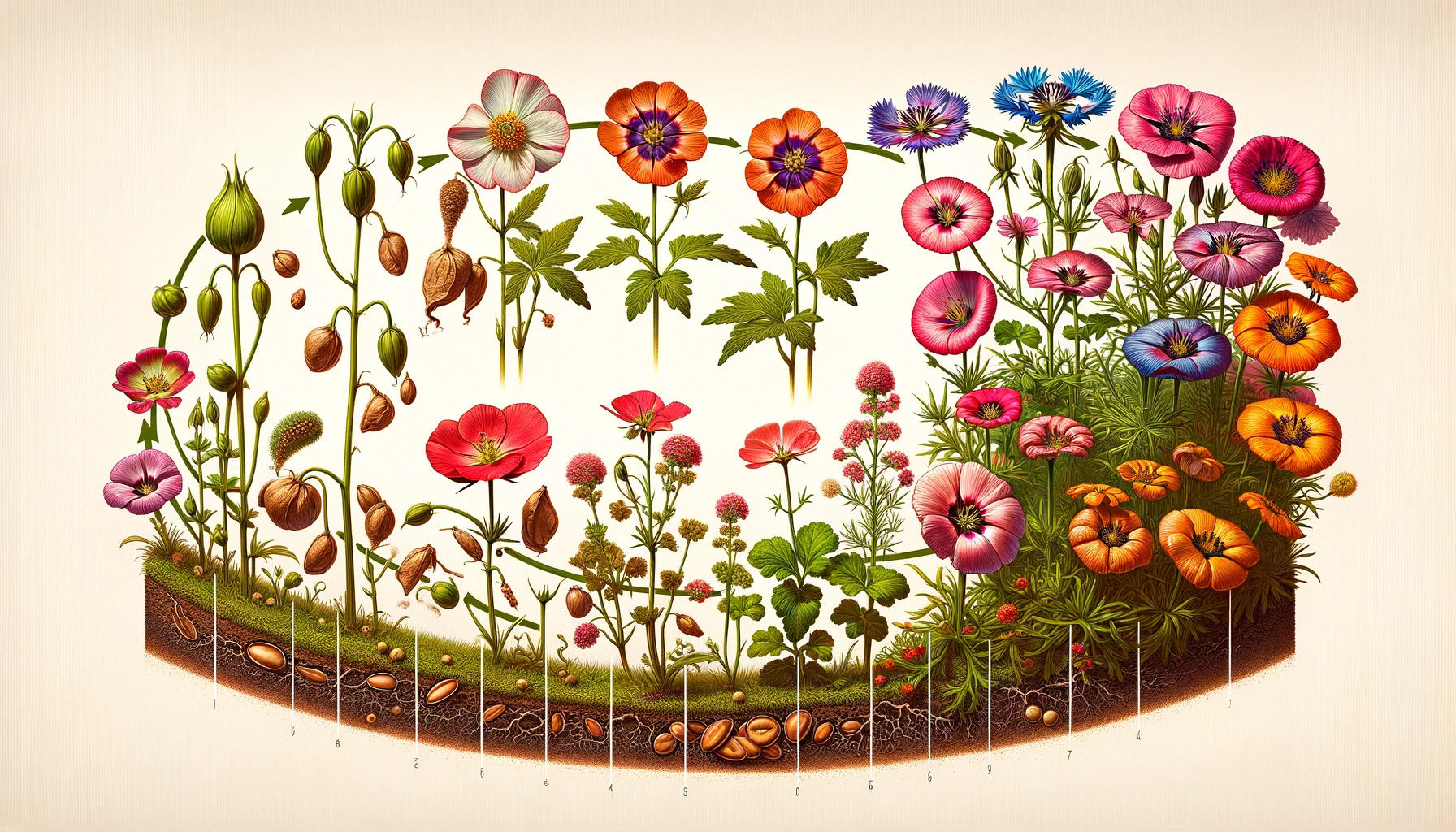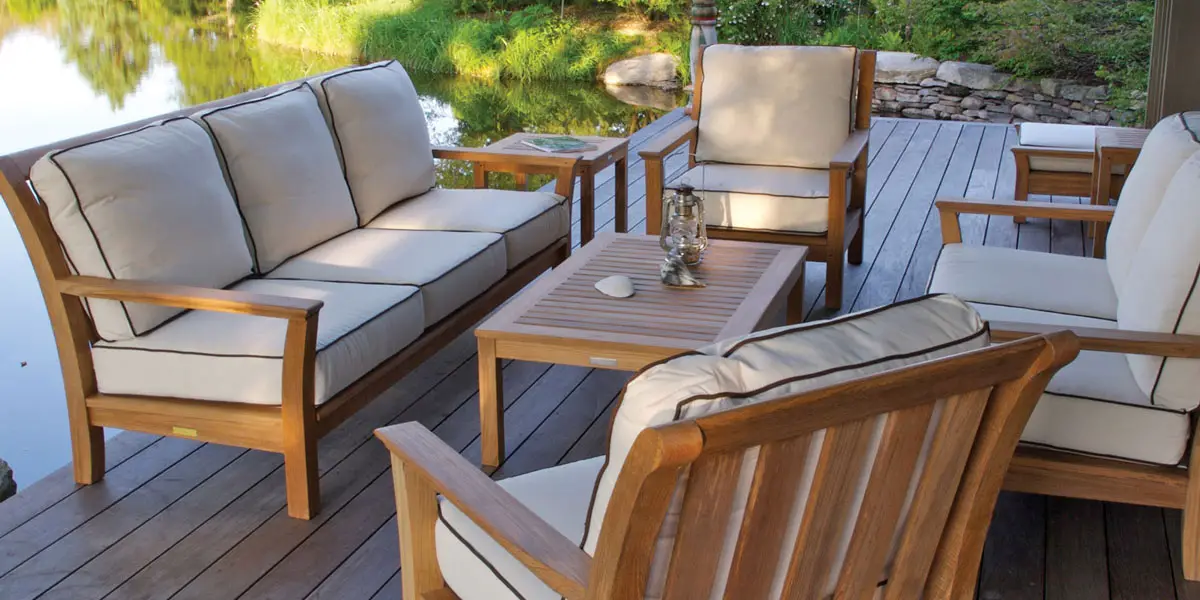Curious about the gardening world’s age-old debate between annuals and perennials? Imagine stepping back in time to when gardeners first grappled with choosing between these two options, each offering its unique set of benefits and challenges. By understanding the characteristics, lifespan, and maintenance requirements of gardening, you can make informed decisions for your garden. Whether you’re a novice gardener or looking to enhance your green thumb skills, grasping the differences between annuals and perennials is key to cultivating a thriving outdoor space that blooms year after year.
Key Takeaways
- Understand the Key Differences: Differentiate between annuals and perennials to make informed choices for your garden.
- Maximize Benefits: Enjoy the advantages of growing both annuals and perennials for a diverse and long-lasting garden.
- Select the Right Types: Choose suitable annuals and perennials based on your garden’s needs and your preferences.
- Consider Planting Advantages: Explore the planting advantages of annuals and perennials to create a flourishing garden space.
- Follow Care and Growing Tips: Implement proper care and growing techniques specific to annuals and perennials for optimal results.
- Factor in Selecting Criteria: Take into account various factors when selecting annuals and perennials to ensure harmony and beauty in your garden.
Key Differences

Life Cycle
Annuals complete their life cycle in one growing season, showcasing rapid growth and blooming within a short period. On the other hand, perennials have a longer life cycle, returning year after year with minimal replanting needed. Understanding these life cycles is crucial for effective gardening planning.
When deciding between annuals and perennials, consider the life cycle and bloom. Annuals demand more attention due to their shorter lifespan, needing regular watering, fertilizing, and deadheading to thrive during the growing season. In contrast, perennials are known for being low-maintenance plants that require less care once established in the garden.
Maintenance Needs
Annuals provide an explosion of color and blooms for just one season before fading away. In comparison, perennials offer enduring beauty as they return each year with consistent foliage and flowers. Choosing between annuals and perennials depends on your preference for changing displays or long-lasting appeal in your garden design.
The longevity of plants plays a significant role when designing your garden landscape. Annuals bring vibrant hues but need replanting every year for continuous color bursts; however, this also allows flexibility to change up your garden’s look annually based on trends or personal preferences. Perennials create a stable foundation with enduring beauty that evolves over time as they mature and spread throughout the seasons.
Benefits of Growing Both
Garden Diversity
Growing annuals in your garden brings a burst of vibrant colors, various shapes, and interesting textures. These plants add a pop of color and excitement to any garden space. On the other hand, perennials contribute to the overall stability and diversity of your garden. They provide a consistent backdrop that lasts for years, enhancing the overall aesthetic appeal.
Combining both types of plants, such as kitchen garden, can create an engaging visual landscape that changes throughout the seasons. Picture this: imagine the bright hues of annual flowers complementing the steady presence of perennial foliage in your garden. The result is a dynamic and visually appealing outdoor space that evolves over time.
- Annuals offer vibrant colors, shapes, and textures.
- Perennials bring stability and consistency to your garden.
- Combining both creates a diverse and visually appealing landscape.
Seasonal Beauty
One significant advantage of growing annuals is their ability to bloom consistently throughout the growing season. These plants provide continuous bursts of color from spring through fall, ensuring there’s always something eye-catching in your garden. Conversely, perennials offer seasonal displays with varying colors and foliage depending on the time of year.
By strategically selecting a mix of annuals and perennials for your garden, you can achieve year-round beauty that transitions seamlessly from one season to another. Imagine enjoying bold blooms during summer while looking forward to rich autumnal tones as fall approaches.
- Annuals provide consistent blooms throughout the growing season.
- Perennials offer seasonal bursts with changing colors.
- Choosing the right combination ensures year-round beauty in your garden.
Types for Your Garden
Annual Varieties
Annuals and perennials are the two main types of plants you can grow in your garden. Popular annual varieties like petunias, marigolds, and zinnias offer a burst of color that lasts for one growing season. With an array of annual flowers available in different colors and sizes, you can mix and match to create stunning visual displays year after year. By trying out new annual varieties annually, you bring freshness to your garden each season.
Think about them as the “fireworks” of your garden – they bloom brightly for a short time but leave a lasting impression with their vibrant hues. These plants are perfect if you enjoy changing up your garden design frequently or want to experiment with different colors and textures regularly.
Pros:
- Provide colorful blooms all season long.
- Easy to grow from seeds or transplants.
Cons:
- Need replanting every year.
- Require more maintenance compared to perennials.
Perennial Examples
On the other hand, perennial examples such as roses, daylilies, and hostas are like the reliable backbone of your garden. These plants come back year after year without needing replanting. From shrubs to grasses to flowering plants, there is a wide range of perennial favorites that can serve as the foundation for your garden’s overall look.
Perennials act as the “anchors” in your garden bed; once planted, they provide stability and structure throughout multiple seasons. If you prefer low-maintenance gardening or want a consistent backdrop for more showy annuals or seasonal flowers, perennials are an excellent choice.
Pros:
- Return each year without replanting.
- Low maintenance once established.
Cons:
- Blooms may have shorter durations than some annuals.
- Initial investment might be higher due to longevity.
Choosing for Your Garden
Climate Considerations
When deciding between annuals and perennials, it’s essential to consider your climate. Annuals should be selected based on what thrives in your specific climate zone. For example, if you live in a warm region, sun-loving annuals like marigolds or zinnias are great choices. On the other hand, perennials should be chosen according to your region’s climate and weather conditions. This ensures that your garden plants will flourish and thrive throughout the seasons.
Understanding how different plants respond to sunlight is crucial for their growth. Some annuals require full sun exposure for optimal development, while others do well in partial shade. For instance, petunias and geraniums love basking in the sun all day long. Perennials also have varying sunlight needs; some prefer full sun exposure while others thrive better in shady spots of the garden. By selecting plants that match these requirements, you can ensure they receive adequate sunlight to stay healthy and vibrant.
Soil Type
Soil plays a vital role in the success of your garden plants’ growth. Annuals generally adapt well to various soil types but typically prefer soil that drains well to prevent waterlogging issues. Marigolds and pansies are examples of annual flowers that can tolerate different soil conditions with proper drainage systems set up within garden beds or containers where they’re planted. On the other hand, perennials have more specific preferences.
Planting Advantages
Annuals Benefits
Annuals, such as marigolds and zinnias, are like the stars of a garden—they bring instant color and vibrancy. These plants excel at filling empty spaces in your garden or adding flair to certain areas. They offer a quick fix for sprucing up your outdoor space.
When you choose annuals, you have the freedom to switch things up yearly. Want a different color scheme or theme? No problem! With annuals, you can easily transform your garden’s look without commitment. It’s like redecorating with new plants every season!
- Provide instant color and impact
- Ideal for filling gaps and creating temporary displays
- Offer flexibility in changing the garden’s appearance annually
Perennials Benefits
Perennials are like the sturdy foundation of a house—they provide long-lasting beauty and stability. Plants like lavender and peonies require less replanting than annuals since they return each year on their own. Less work means more time enjoying your garden.
Investing in perennials is investing in the future of your garden. Once established, these plants keep coming back, saving you money on replacements over time while enhancing the overall appeal of your outdoor space.
Care Tips
Watering Needs
Annuals, like petunias or zinnias, thirstier than perennials due to their short lifespan. Perennials, such as lavender or peonies, have deep roots that retain moisture longer. Understanding the watering requirements of each plant type is crucial for their well-being and longevity in your garden. By catering to these needs appropriately, you can ensure vibrant blooms and healthy foliage.
When caring for annuals, regular watering sessions are essential to maintain their growth and blooming potential throughout the season. On the other hand, perennials may only need occasional watering once they establish strong root systems. Overwatering annuals can lead to root rot while neglecting perennial’s water needs might hinder their growth.
- Pros: Tailoring watering schedules based on plant types.
- Cons: Risk of overwatering annuals if not monitored closely.
Fertilizing Practices
Annual plants thrive with consistent fertilization during the growing season to support continuous flowering or fruit production. Conversely, perennials generally require less frequent fertilizing but benefit from occasional nutrient boosts for sustained health and vigor. Following proper fertilizing practices enhances the overall well-being of your garden plants by providing them with essential nutrients necessary for robust growth.
For annuals, consider using a balanced fertilizer every few weeks to sustain their high energy demands for blooming profusely until frost arrives. In contrast, feeding routines for perennials should focus more on maintaining soil fertility rather than encouraging rapid growth seen in annual plants.
- Properly timed fertilization contributes significantly to plant vitality.
- Improper application can lead to nutrient imbalances affecting plant health negatively.
Growing Tips
Seasonal Guide
A seasonal guide is essential for beginners to plan the planting of annuals strategically, ensuring a garden with continuous blooms. By understanding the blooming seasons of perennials, one can create a well-rounded garden design that flourishes year-round. Following a seasonal guide diligently guarantees an aesthetically pleasing garden throughout all seasons.
Consider the different blooming times of annuals and perennials. For instance, petunias are popular annuals known for their long-lasting summer blooms, while peonies are beloved perennials that bloom in late spring to early summer. Understanding these patterns will help you create a visually appealing landscape.
Pros:
- Helps in strategic planning for continuous blooms.
- Creates a well-rounded garden design.
- Ensures an aesthetically pleasing garden throughout all seasons.
Pruning Techniques
Annual plants typically do not require extensive pruning compared to perennials. However, occasional pruning may be necessary for perennials to maintain their shape and encourage new growth effectively. Proper pruning techniques play a vital role in keeping plants healthy and promoting optimal flowering outcomes.
For beginners tending to their gardens, learning how and when to prune is crucial. While marigolds (annuals) may only need deadheading (removing spent flowers), roses (perennial) benefit from regular pruning sessions during dormant periods like late winter or early spring.
Cons:
- Perennials might require more maintenance due to occasional pruning needs.
- Incorrect pruning techniques can harm plant health.
- Proper pruning encourages optimal flowering results.
Selecting Factors
When deciding between annuals and perennials, consider color themes. Annuals offer versatility, allowing you to experiment with different colors every year. On the other hand, perennials provide consistency in your garden’s color scheme throughout the seasons. By selecting complementary or contrasting color themes, you can enhance visual interest in your garden.
Space planning is crucial when choosing between annuals and perennials. With annuals, you have the flexibility to strategically place them to fill empty spaces or create focal points within your garden layout. Meanwhile, perennials require careful consideration of their mature size to prevent overcrowding as they grow over time. Effective space planning ensures a well-balanced and visually appealing arrangement for both types of plants.
Color Themes
- Annuals: Easy experimentation with different colors annually
- Perennials: Contribute consistently to the overall color scheme
- Complementary or contrasting colors add visual interest
Space Planning
- Annuals: Strategic placement for filling spaces and creating focal points
- Perennials: Consider mature size to avoid overcrowding
- Effective planning leads to a balanced garden layout
When it comes down to choosing between annuals and perennials based on color themes, think about how you want your garden to look throughout the year; if you prefer changing things up often, annuals might be more suitable for your needs. Conversely, if you desire a consistent aesthetic that evolves gradually through each season without much intervention from year-to-year adjustments like with perennials would be ideal.
In terms of space planning considerations regarding these plant types – while placing annual flowers strategically can help fill gaps instantly adding pops of vibrant hues where needed – remember that perennial plants are long-term residents in your garden landscape; hence understanding their growth patterns is vital for maintaining a harmonious balance without causing overcrowding issues over time.
Integrating for Beauty
Design Strategies
Annuals are perfect for creating temporary borders, edging, or vibrant container displays. Picture a row of marigolds framing your garden beds or colorful petunias spilling over hanging baskets. On the other hand, perennials excel as foundation plants or in perennial beds to provide structure and permanence to your garden design. By skillfully blending annuals and perennials, you can achieve a harmonious balance that elevates the overall aesthetic of your outdoor space.
When planning your garden layout, consider how different mixes of annuals and perennials can complement each other throughout the seasons. For instance, you could plant annual impatiens along with perennial hostas to create a lush display that transitions beautifully from spring to summer. Incorporating taller perennials like coneflowers behind shorter annuals such as begonias adds depth and visual interest to your flower beds.
Year-Round Interest
While annuals offer bursts of seasonal color and vitality, they may not provide visual appeal all year round. On the contrary, perennials contribute to year-round interest through various elements like their foliage textures, interesting seed heads, or evergreen qualities that persist even in winter. To ensure continuous visual interest in your garden throughout the changing seasons, it’s beneficial to combine both annuals and perennials strategically.
Final Remarks
You’ve now got the dirt on annuals vs. perennials. Remember, it’s not a battle of good vs. evil, but rather a beautiful dance of variety in your garden. Mix them up like a DJ blending beats at a party, creating a symphony of colors and textures that’ll make your garden pop!
So, grab your gardening gloves and get planting! Experiment, have fun, and let your green thumb flourish. Whether you’re team annuals or team perennials, both have their unique charms to offer. Your garden canvas awaits your artistic touch. Go on, paint it with the hues of nature’s finest!
Frequently Asked Questions
What are the main differences between annuals and perennials?
Annuals complete their life cycle in one season, while perennials regrow each year. Annuals offer vibrant colors for a short period, whereas perennials provide long-lasting beauty with less replanting.
Why should I consider growing both annuals and perennials in my garden?
By planting both types, you can enjoy continuous blooms throughout the seasons. Annuals bring immediate color impact, while perennials offer enduring beauty year after year.
Which types of annuals and perennials are suitable for beginners’ gardens?
For beginners, easy-to-grow annual options include marigolds and zinnias. Perennial choices like daylilies and coneflowers require minimal maintenance and provide beautiful blooms consistently.
How do I choose between annuals and perennials for my garden?
Consider your time commitment – choose annuals if you prefer changing displays yearly or opt for low-maintenance perennials if you seek long-term plantings that return annually.
What are some essential care tips to ensure healthy growth of annuals and perennials?
Water plants regularly based on their specific needs, deadhead spent flowers to encourage new growth, fertilize as needed but avoid over-fertilization to prevent damage to roots. Check soil moisture levels frequently.
How can I integrate both annuals and perennials effectively for a beautiful garden design?
Mix tall perennial plants at the back of flower beds with colorful low-growing annual varieties at the front. Create visual interest by combining different textures, heights, colors within your garden space.






